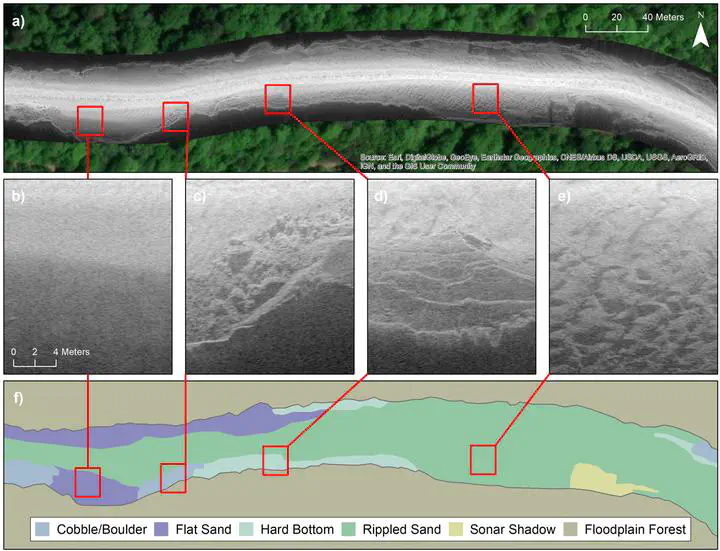PING‐Mapper: Open‐Source Software for Automated Benthic Imaging and Mapping Using Recreation‐Grade Sonar
 Image credit: Bodine et al. (2022)
Image credit: Bodine et al. (2022)Abstract
The characterization of benthic habitats is essential for aquatic ecosystem science and management, but is frequently limited by waterbody visibility and depth. Recreation‐grade side‐scan sonar systems are increasingly used to aid scientific inquiries in aquatic environments due to their relative low‐cost, ease of operation, low‐weight, and ease of mounting on a variety of vessels. However, existing procedures and software for post‐processing these data are either limited, closed source, or fail on data from new sonar models, limiting the development of reproducible workflows. Here, we present PING‐Mapper, an open‐source and freely available side‐scan sonar post‐processing toolset for processing and mapping sonar recordings from popular Humminbird instruments. The modular software automatically: (a) decodes sonar recordings from any Humminbird system, (b) exports ping attributes from every sonar channel, (c) uses sonar sensor depth for water column removal, and (d) exports sonogram tiles and georectified mosaics. Sonar channels are processed in parallel for quick decoding and metadata extraction. Major processing wokflows, including georectification and image export, are optimized to scale with computing resources. The software has been extensively tested using data from several rivers of varying character and distribution of depths, but could also be used in estuarine and lacustrine environments. Usage of PING‐Mapper is illustrated in three case studies focused on mapping large woody debris, bathymetric mapping, and visual interpretation and mapping of substrates for selected reaches of the Pearl and Pascagoula river systems in Mississippi.